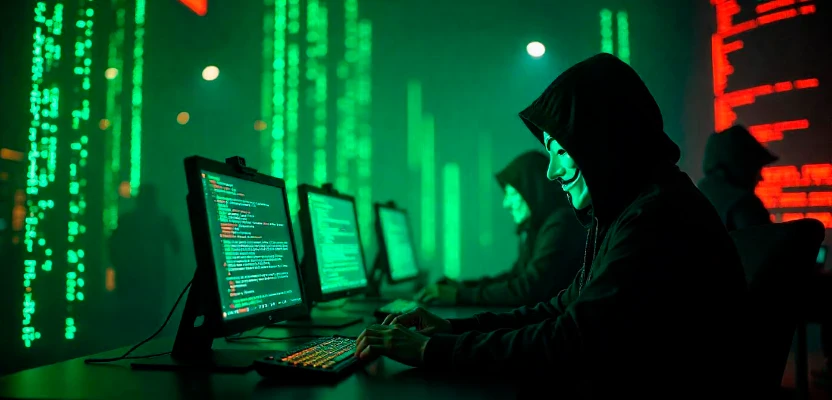
Introduction
In the digital age, cyber warfare has become a new frontier in global conflicts. While traditional military engagements still play a role, nations increasingly rely on covert cyber operations to disrupt, manipulate, and influence. One of the most significant developments in recent years is the transformation of hacktivism from a decentralized grassroots movement into a sophisticated tool used by state-sponsored actors. Researchers from Check Point Research have uncovered compelling evidence that many so-called hacktivist groups are, in reality, fronts for intelligence agencies, engaged in cyber warfare and disinformation campaigns.
The Evolution of Hacktivism
Hacktivism—an amalgamation of hacking and activism—emerged in the 1980s and gained traction in the 1990s and 2000s. Groups like Cult of the Dead Cow and Anonymous pioneered digital activism, launching attacks against corporations, governments, and institutions they perceived as oppressive or unjust. These early efforts were characterized by website defacements, distributed denial-of-service (DDoS) attacks, and doxxing. However, modern hacktivism has taken a darker turn, as state actors increasingly disguise cyber warfare as independent activism.
The Role of Nation-States in Hacktivism
Governments have recognized the potential of hacktivism as a strategic asset. Instead of engaging in direct cyber conflicts, they sponsor or covertly control hacktivist groups to carry out cyberattacks under the guise of independent activism. This tactic allows for plausible deniability, reducing the risk of diplomatic repercussions while achieving geopolitical objectives.
Key Indicators of State-Sponsored Hacktivism
- Synchronized Attacks: Cyberattacks by hacktivist groups frequently coincide with major geopolitical events.
- Similar Attack Methods: Repeated use of the same techniques, infrastructure, and malware across different groups.
- Linguistic and Stylistic Patterns: Analysis of messages reveals similarities in writing style and phrasing, suggesting centralized control.
- Shifts in Messaging and Targets: Sudden changes in focus and language, indicating external influence.
Unmasking the Hidden Links
Researchers have used advanced artificial intelligence (AI) techniques such as Topic Modeling and Stylometry to analyze the communications of various hacktivist groups. These methods help uncover hidden patterns, establish links between seemingly unrelated actors, and expose government affiliations.
Topic Modeling: Identifying Themes
Topic Modeling is a machine learning technique that identifies recurring themes in large datasets. Researchers analyzed over 20,000 messages from 35 hacktivist accounts across Telegram and X (formerly Twitter). The results revealed:
- Coordinated attacks on Israel, Iran, Ukraine, and Russia, often coinciding with military or political crises.
- Information leaks serving intelligence-gathering objectives rather than traditional activism.
- Propaganda efforts aligned with specific geopolitical narratives.
Stylometry: The Digital Fingerprint
Stylometry involves analyzing linguistic patterns, including word choice, sentence structure, and punctuation habits. This technique uncovered:
- Consistent writing styles across multiple accounts, suggesting centralized authorship.
- Abrupt changes in tone and structure, indicating shifts in control or rebranding.
- Connections between groups, revealing shared operational methods.
Case Studies of Cyber Influence Operations
1. IT Army of Ukraine
Initially formed as a response to the Russian invasion of Ukraine, this group saw a drastic shift in writing style and messaging in 2022. The change suggests possible government oversight or external takeover.
2. Pro-Russian Hacktivist Groups
Entities such as XakNet and KillNet frequently launch attacks on Western institutions, aligning with Russian geopolitical interests. Their operations share notable similarities with known Russian intelligence activities.
3. Middle Eastern Cyber Proxies
Hacktivist groups claiming to operate independently in Iran and Palestine often coordinate attacks that align closely with state objectives. Their activities frequently mirror political developments and military conflicts.
The Future of Hacktivism and Cyber Warfare
As governments refine their cyber warfare strategies, attribution becomes increasingly challenging. The lines between independent activism and state-sponsored operations are becoming blurred, complicating international efforts to respond to cyber threats.
Key Trends to Watch:
- Enhanced Anonymity: Governments will continue using hacktivist groups to mask state operations.
- Advanced AI Techniques: AI-driven cyber warfare will become more prevalent.
- Escalation of Cyber Conflicts: More nations will employ cyber proxies in geopolitical disputes.
Countering the Threat
To address the rise of state-sponsored hacktivism, cybersecurity experts and governments must implement new strategies:
- Advanced Attribution Methods: AI-powered analysis can detect hidden connections between cyber operations.
- International Cyber Agreements: Diplomatic efforts are needed to establish norms and accountability in cyber warfare.
- Public Awareness Campaigns: Educating users on disinformation tactics and cyber threats can reduce the effectiveness of state-sponsored influence campaigns.
Conclusion
Hacktivism has evolved from a form of digital protest into a powerful instrument of cyber warfare. The integration of state intelligence tactics with hacktivist methodologies complicates the cybersecurity landscape, necessitating new approaches to attribution and defense. As cyber warfare intensifies, understanding and exposing these covert operations will be crucial in maintaining digital sovereignty and global security.




Comments 0